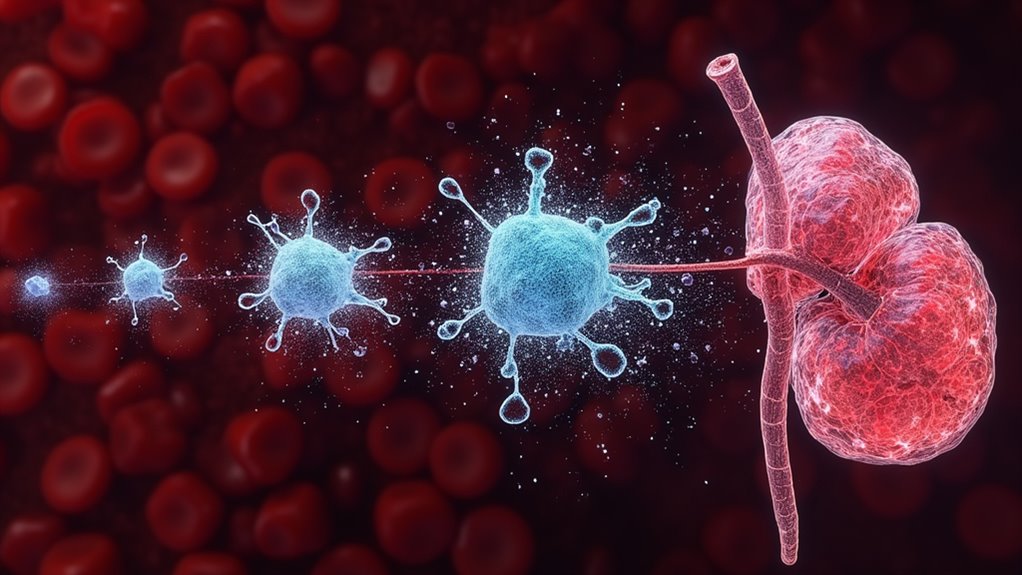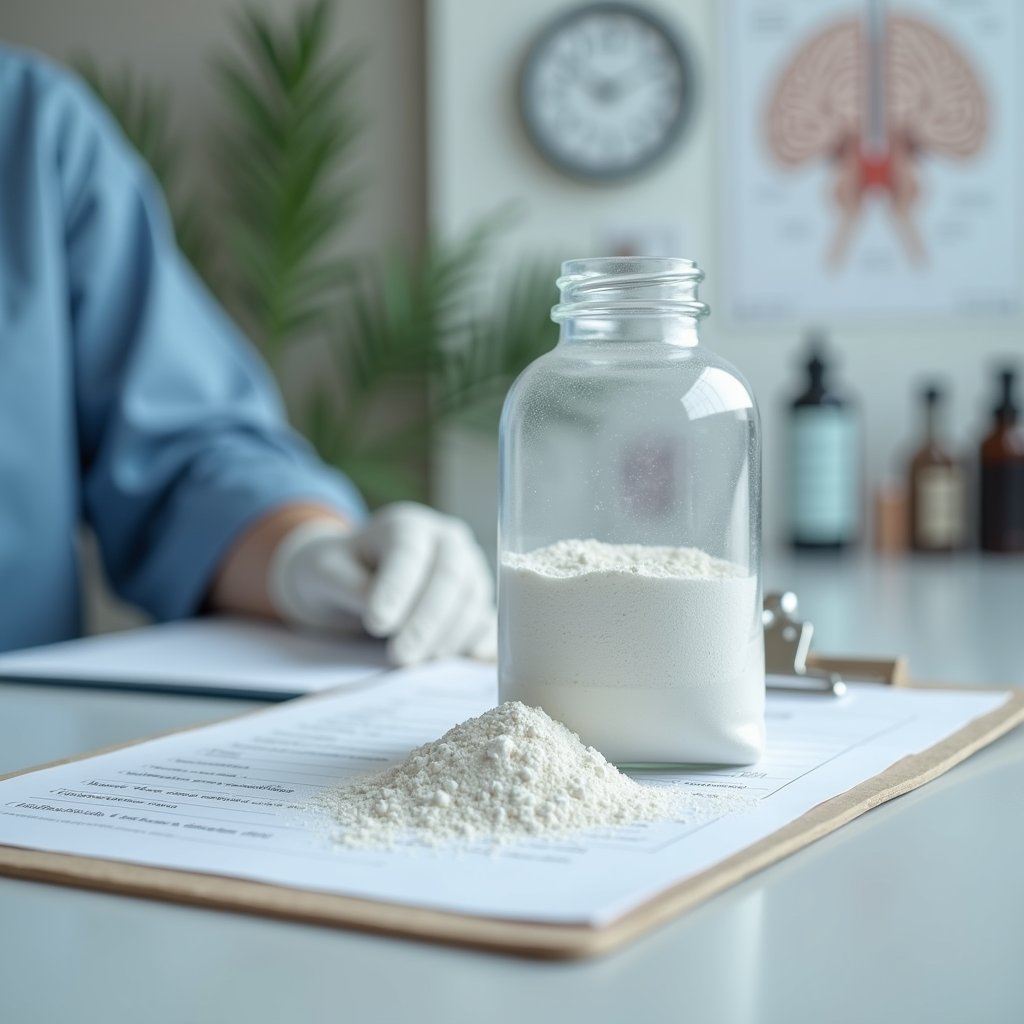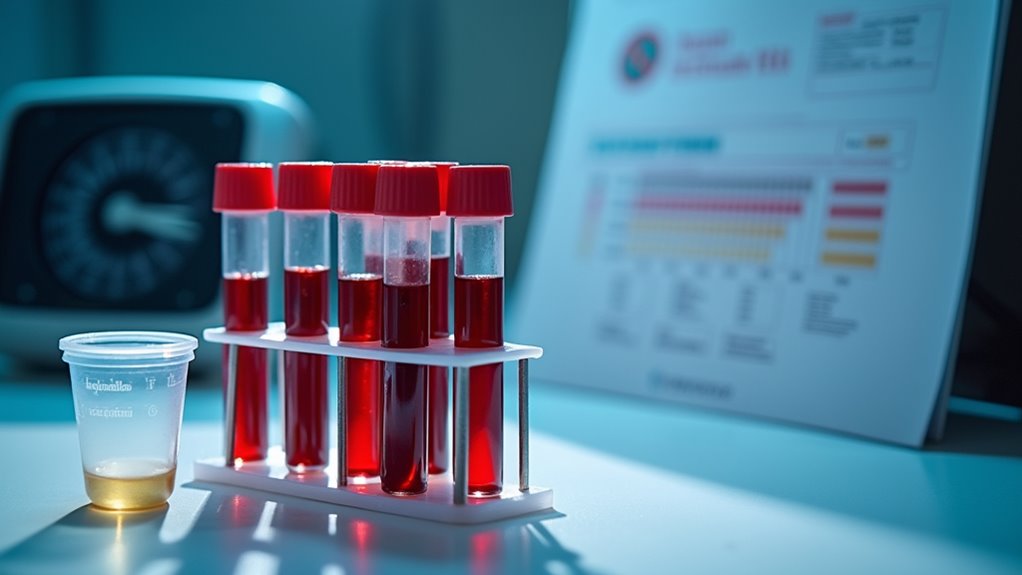Cocaine typically remains in your body for varying timeframes depending on testing methods: 2-4 days in urine (up to 14 days for heavy users), 24-48 hours in blood, 1-2 days in saliva, and up to 90 days in hair follicles. Your metabolism rate, body composition, dosage, frequency of use, and kidney/liver function all influence retention time by 5-30%. These detection windows reflect how cocaine’s metabolites circulate long after its brief 15-30 minute euphoric effects have subsided.
Understanding Cocaine’s Basic Metabolism

When cocaine enters your system, it undergoes rapid hepatic metabolism primarily through hydrolysis pathways mediated by carboxylesterase enzymes. Your liver processes approximately 80% of the drug, converting it into metabolites like benzoylecgonine and ecgonine methyl ester. These metabolites remain detectable considerably longer than the parent compound.
Cocaine metabolism varies based on several factors including your genetic profile, liver function, and concurrent substance use. The drug’s half-life averages 60 minutes, meaning your body eliminates half the substance within this timeframe. However, enzyme activity fluctuates between individuals some possess more efficient carboxylesterase enzymes, accelerating clearance rates by up to 30%.
If you’re a chronic user, cocaine and its metabolites may accumulate in fatty tissues, extending detection windows well beyond occasional use patterns.
Detection Windows Across Different Testing Methods
The metabolism of cocaine directly impacts its detectability in different biological specimens. You’ll find diverse detection windows depending on the testing method used:
Urine testing, the most common detection method, identifies benzoylecgonine for 2-4 days after single use, extending to 10-14 days for heavy users. Blood tests offer a narrower window of 24-48 hours but provide higher testing accuracy for recent consumption.
Hair follicle testing detects cocaine for up to 90 days, making it effective for identifying long-term use patterns. Saliva tests identify the drug for approximately 1-2 days, while sweat patches, worn for up to 14 days, capture continuous drug excretion. Detection windows lengthen with frequent use as metabolites accumulate in your system.
Factors That Influence Cocaine Retention

Multiple physiological and behavioral factors greatly impact how long cocaine remains detectable in your system. Your metabolism rate, which varies by 5-10% among individuals due to genetic factors, directly affects elimination speed. Body mass index also matters cocaine’s half-life extends in individuals with higher body fat percentages.
Dosage impact is significant; higher quantities and frequent use create accumulation in fatty tissues, extending detection windows by 24-72 hours. Cocaine purity (street cocaine averages 30-60% purity) affects retention time, while polydrug use, particularly alcohol, creates cocaethylene, which extends detection by up to 25%.
Your kidney and liver function efficiency, hydration status, and even urinary pH (acidic urine accelerates excretion) all modify cocaine’s clearance rate. Maturity-related metabolic slowdown increases detection windows by approximately 10% in users over 40.
Physical and Psychological Effects Timeline
Cocaine’s impact on your body follows a predictable timeline that varies based on administration method and dosage. When snorted, effects begin within 3-5 minutes, peak at 20-30 minutes, and diminish after 60-90 minutes. Smoking or injecting produces faster onset (10-15 seconds) with shorter duration (5-10 minutes).
Short term effects include euphoria, heightened alertness, and increased heart rate, typically lasting 15-30 minutes before a “crash” characterized by fatigue and dysphoria. You’ll experience peak physiological responses elevated blood pressure, dilated pupils, and hyperthermia within 20 minutes of consumption.
Long term effects develop gradually, with cardiovascular damage appearing after months of use. Psychological dependence can emerge within weeks, while structural brain changes become evident after 3-6 months of regular consumption.
Clearing Cocaine From Your System: Myths vs. Reality

Despite widespread misinformation, clearing cocaine from your system follows predictable pharmacokinetic principles that cannot be greatly accelerated through commercial “detox” products or home remedies. Benzoylecgonine, cocaine’s primary metabolite, exhibits a half-life of approximately 12 hours and requires 2-4 days for complete elimination regardless of cleansing methods attempted.
Common detox myths without scientific support include:
- Drinking excessive water to “flush” cocaine metabolites (merely dilutes urine temporarily)
- Taking niacin, vinegar, or cranberry supplements (no effect on cocaine’s metabolic pathway)
- Using commercial “detox” drinks (primarily mask detection rather than accelerate elimination)
Your body’s liver and kidneys eliminate cocaine at a biochemically fixed rate. Only time not products or procedures genuinely clears cocaine metabolites from your system. Hydration and abstinence remain the only evidence-supported approaches.
Health Implications of Cocaine’s Persistence in the Body
Cocaine’s persistence in your body can cause cumulative damage to your cardiovascular system, liver, kidneys, and brain through repeated exposure and metabolite toxicity. Your withdrawal timeline typically begins 24 hours after last use, with symptoms peaking at 72 hours and potentially lasting 7-10 days depending on usage patterns and individual physiological factors. These withdrawal effects correlate directly with cocaine’s elimination half-life and can intensify organ damage through mechanisms like increased blood pressure, tachycardia, and altered neural pathways.
Organ Damage Overview
While it circulates through the bloodstream, cocaine inflicts cumulative damage on multiple organ systems, with severity correlating directly to dosage frequency and duration of use. Your body metabolizes cocaine primarily through hepatic pathways, resulting in significant stress on essential organs.
Research demonstrates three primary damage patterns:
- Cardiovascular deterioration: Cocaine constricts blood vessels while accelerating heart rate, causing hypertension and heart damage ranging from arrhythmias to myocardial infarction
- Hepatotoxicity: Metabolic processing strains liver health, potentially leading to cellular necrosis and impaired function
- Cerebrovascular complications: Vasoconstrictive properties increase stroke risk by 6-7 times during active use
These physiological impacts persist beyond detection timeframes, with evidence suggesting cellular damage continues even after cocaine metabolites have cleared your system.
Withdrawal Timeline Effects
As cocaine metabolites gradually clear from your system, a predictable withdrawal syndrome emerges, characterized by distinct physiological and psychological phases directly correlated with the drug’s elimination half-life.
| Timeline | Primary Symptoms | Severity |
|---|---|---|
| 24-72 hours | Intense cocaine cravings, fatigue, hypersomnia | Severe |
| 1-2 weeks | Anhedonia, irritability, anxiety | Moderate |
| 2-4 weeks | Persistent dysphoria, random cravings | Mild |
Withdrawal symptoms follow a biphasic pattern, with initial “crash” symptoms (extreme fatigue, depression) evolving to protracted withdrawal characterized by diminishing but persistent psychological distress. Your dopaminergic system requires approximately 14 days to begin reestablishing baseline function. During this period, neurochemical imbalances produce both physiological discomfort and psychological vulnerability that greatly increase relapse risk. Clinical data indicates 65-70% of individuals experience acute withdrawal symptoms within 24 hours of cessation.
Frequently Asked Questions
Can Cocaine Be Detected in Hair if I Dye It?
Yes, dyeing your hair doesn’t eliminate cocaine detection. Hair dye interaction with cocaine metabolites is minimal as these compounds become embedded within the hair shaft’s cortex during cocaine metabolism. Hair testing detects cocaine for up to 90 days regardless of cosmetic treatments. The analytical methods used target the drug’s molecular structure within the hair’s internal composition, not surface contaminants. You can’t circumvent detection through external treatments like dyeing, bleaching, or washing.
Does Secondhand Cocaine Exposure Cause Positive Drug Tests?
Secondhand cocaine exposure typically won’t cause positive drug tests in standard screenings. Research indicates that passive exposure to cocaine smoke or residue transfers minimal amounts to your system generally below detection thresholds of most drug testing methodologies. However, extremely heavy environmental contamination in enclosed spaces might potentially register, though this is rare. Hair testing is more sensitive than urine testing, but even these advanced methods generally distinguish between actual use and incidental environmental exposure.
Will Drinking Water Help Pass a Cocaine Test Faster?
Drinking water won’t notably accelerate cocaine elimination from your system. While hydration effects may slightly increase urination frequency, this doesn’t substantially alter cocaine’s metabolic pathway or detection timeframes. Your liver metabolizes cocaine at a fixed rate that excess fluid intake can’t meaningfully change. Standard detox methods involving water consumption lack scientific evidence for effectively expediting cocaine clearance. Metabolism rate, dosage, frequency of use, and individual physiology remain the primary determinants of how quickly cocaine clears your system.
Can Prescription Medications Trigger False Positives for Cocaine?
Certain prescription medications can trigger false positives for cocaine during drug testing. Specifically, topical anesthetics containing lidocaine or novocaine, some antibiotics, and medications like amoxicillin may create these inaccurate results. You’ll want to disclose all medications to your testing administrator before screening. Most confirmatory tests (GC-MS) can distinguish between true cocaine metabolites and false positives. If you’re concerned, don’t discontinue your prescribed medications without consulting your healthcare provider initially.
Does Cocaine Stay Longer in the System of First-Time Users?
No, cocaine doesn’t typically stay longer in novice users‘ systems. User metabolism primarily determines elimination rates, regardless of usage history. Novice effects may seem more intense due to lack of tolerance, but the metabolic breakdown follows the same biochemical pathways. The drug’s clearance depends on individual factors like liver function, hydration levels, and metabolic rate rather than usage frequency. Detection windows remain consistent: 2-4 days in urine, 24-48 hours in blood, and 1-4 days in saliva for most users.










